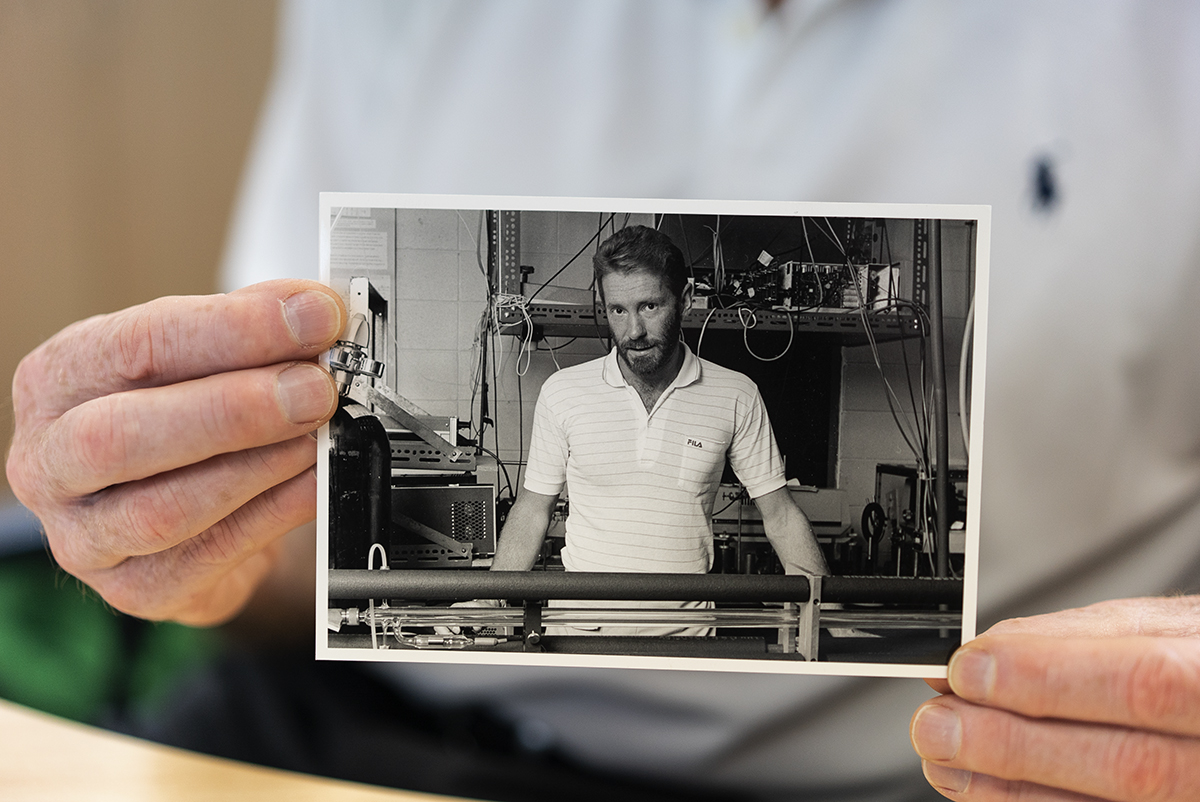Then and now: Professor Ken Baldwin
Professor Ken Baldwin is holding a black and white photo taken of him in the mid-1980s. The photo shows him as a young postdoc in a laboratory at ANU.
In the photo he is dressed casually in a white polo shirt, surrounded by a tangle of wires and miscellaneous lab equipment.
As Ken inspects the photo, he tells me about it.
“As you can see, a lot of the equipment is all lashed together. It looks a little Heath Robinson-y but that’s because we built a lot of it.
“I’m standing in front of a carbon dioxide laser system that produced light in the infra-red part of the spectrum. We used that to study clusters of molecules and the way they broke up when being irradiated by laser light.”

In that small rough-and-ready laboratory Ken was focussed on a very big problem. He was researching physical processes that influence Earth’s changing climate, at a time when the general public had little awareness of what is now a ubiquitous concern.
“We wanted to understand how atoms and molecules interacted when they were impinged upon by light of different wavelengths. This tells you about—for example—how sunlight is absorbed in the atmosphere.”
At the time, there was growing consensus amongst scientists that climate change needed to be understood.
“Although the warming of the Earth was not at the forefront of people’s minds at the time, it was certainly something that scientists were aware of.”
I ask Ken about what the photo reveals about the genesis of present-day energy technology.
“For example, it’s only through the lessons we learned in the 80s and 90s, that we have the current state-of-the-art technology with wind and solar energy solutions.”
Ken says that physicists increasingly use lasers to conduct their research.
“The lasers we have now are so much better controlled, they are more characterised, they are more precise and we are able to define the wavelength extremely accurately.
“The lasers we used in the 1980s would operate with a bandwidth of around 10 Megahertz. Nowadays, lasers being used in the ANU Research School of Physics and Engineering have a bandwidth 100,000 times narrower than that.”
Despite these impressive advances, Ken insists that climate change cannot be mitigated with energy solutions alone.
“The only way that we can keep global warming in check to two degrees or below is if we transform the economy across the board. It isn’t just the energy transformation which has to take place.
“Only by harnessing all our skills and knowledge—not just in sciences, engineering and technology, but also in the human and social science disciplines—can we hope to achieve this imperative to keep the Earth’s temperature in check.”
As he places the black and white photograph down on his desk, I can see where Ken has come from, and where he’s going.
“The ultimate goal is to become carbon neutral by the middle of the century. It will be the energy sector that leads the way.”
Professor Ken Baldwin is the Deputy Director (Research) at the ANU Research School of Physics & Engineering and the Director of the Energy Change Institute.
